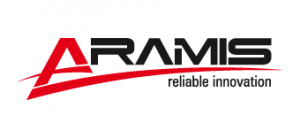WATER DISTRIBUTION NETWORKS: PHM OF PUMPING STATIONS
Description
For a good planning of pump maintenance, it is necessary to diagnose defects at early stage of degradation, analyzing possible run-to-failure trajectories along with environmental and operational conditions. This allows avoiding unnecessary interventions, decreasing the maintenance cost and increasing the asset availability.
Results
Aramis has developed a method that analyzes the correlation between pump sensors such as engine current, pressure, bearing temperatures and vibrations to isolate the pumps anomalous conditions.
A RISK-BASED DIAGNOSTIC CAMPAIGN OPTIMIZATION FOR ELECTRIC POWER DISTRIBUTION NETWORKS
Description
To prevent failures of Medium Voltage Distribution Networks (MVDN), diagnostic campaigns are performed , which estimate the degradation state of the network branches. These campaigns are costly and, thus, only a small portion of the network can be analyzed every year. Therefore, their prioritization of is fundamental for the network efficient management.
Aramis has developed a risk-based methodology for the identification of the optimal portfolios of MVDN branches undergoing diagnostic measurements. The branch failure likelihood is estimated through a survival model, which links the branch features to historical failure data.
Results
The developed tool has considerably improved the campaign efficiency in identifying the network branches, thus reducing the failure experienced by the network.
A RESILIENCE-IMPROVEMENT FRAMEWORK FOR ELECTRIC POWER DISTRIBUTION NETWORKS
Description
The resolution of the Italian authority ARERA 668/2018/R/eel ”Incentives to increase the resilience of electric distribution networks” ARERA (2018), asks Distribution System Operators to prepare a three-year plan for increasing the resilience of their grids. Although the relevance of the theme, there is no established framework to quantify the resilience of the network with respect to heat wave events.
Aramis has developed a complete framework, which identifies the weather and load conditions which result in a increased risk of failure of network elements and quantifies the time to event up to the next failure. The framework predicts the elements of the network which are likely to experience multiple failures, leading to a large number of users disconnected, considering the topology and the characteristics of the grid.
Results
The developed framework has properly selected the weakest elements of the network and the proposed resilience-oriented investment plans have been accepted by ARERA.
OPTIMIZATION OF THE INSPECTION POLICY FOR A COMPLEX MUNICIPAL GAS GRID
Description
Development of an optimization model to improve the inspection policy for a gas grid considering the criticality of gas tubes according to their physical features, such as material or design diameter using a survival model. The estimation of the tube’s failure likelihood is estimated through a survival model used to link the physical tube’s features to the available historical failure data.
The objective function of the optimization problem has been formalized to take into account eventual economical losses due to the failure’s identification by third parties.
Results
on-going project







